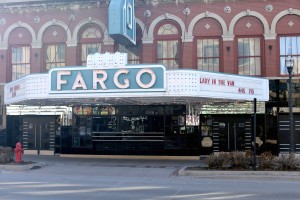Rarely in cinema can you find a story with each fundamental component – acting, directing, screenplay and cinematography – pushed to its limits without grounding it in realism or gruesome ultraviolence, but Céline Sciamma’s “Portrait of a Lady on Fire” is one of those stories.
“Portrait of a Lady on Fire” is a French film set in the late 1700s about a woman, Marianne, commissioned to paint a portrait of an aristocrat, Héloïse, without the latter finding out. What starts out as an assignment turns into something much more. The film features a small cast of women – Noémie Merlant as Marianne, Adèle Haenel as Héloïse, Luàna Bajrami as the maid Sophie and Valeria Golino as Héloïse’s mother.
The film won the Queer Palm (making Sciamma the first woman director to do so) as well as Best Screenplay at Cannes and was also recognized as one of the best non-English language films of 2019.
The success of “Portrait of a Lady on Fire” lies in its mise-en-scène (a French word meaning placing in a scene). The tight lens captures the two mademoiselles intimately sharing the focus. Sciamma has talked about the film’s exploration of the “female gaze,” a camera’s fixation on women in film, from another woman’s point of view rather than a man’s. The ever-present sensuality of the two occupying the same space and subtly eyeing each other makes for a slow burn.
The standout performances by Merlant and Haenel are extraordinary. Sciamma’s screenplay offers them limited dialogue, which means the actresses communicate mostly with their eyes and bodies. Much like the two main characters in Luca Guadagnino’s “Call Me by Your Name,” another period drama with a same-sex love affair in a gorgeous European setting, the excitement of their relationship comes from what little they say and how much they do.
Even while there are nearly no men on screen the entire movie, the demanding patriarchy silently haunts the characters. Their aspirations of freedom and unadulterated love are brushed aside by forces never even seen in the film. Héloïse, who is arranged to marry a Milanese stranger, has been shut in by her mother for fear of following in her suicidal older sister’s footsteps off a cliff.
Claire Mathon’s (“Atlantics”) cinematography for “Portrait of a Lady on Fire” is magnificent, with beautiful light illuminating the castle and the waves crashing on the beach of a Brittany island. The film’s striking fire motif – enticing and warm, but also restricted and searing – is expertly integrated into the movie by Sciamma. The bright flames offer an alluring contrast to the rest of the film’s pastel palette.
“Portrait of a Lady on Fire” is a deeply moving film about love that doesn’t bow to societal expectations. The emotional and visual journey is unlike any other in recent years, and much like portrait art, this film is a spectacle that will stand the test of time.
Annie is a senior double-majoring in Environmental Studies and Heritage and Museum Studies, as well as minoring in German. She loves adventures, coffee, and dogs. This is her third year with the Concordian.





Be First to Comment